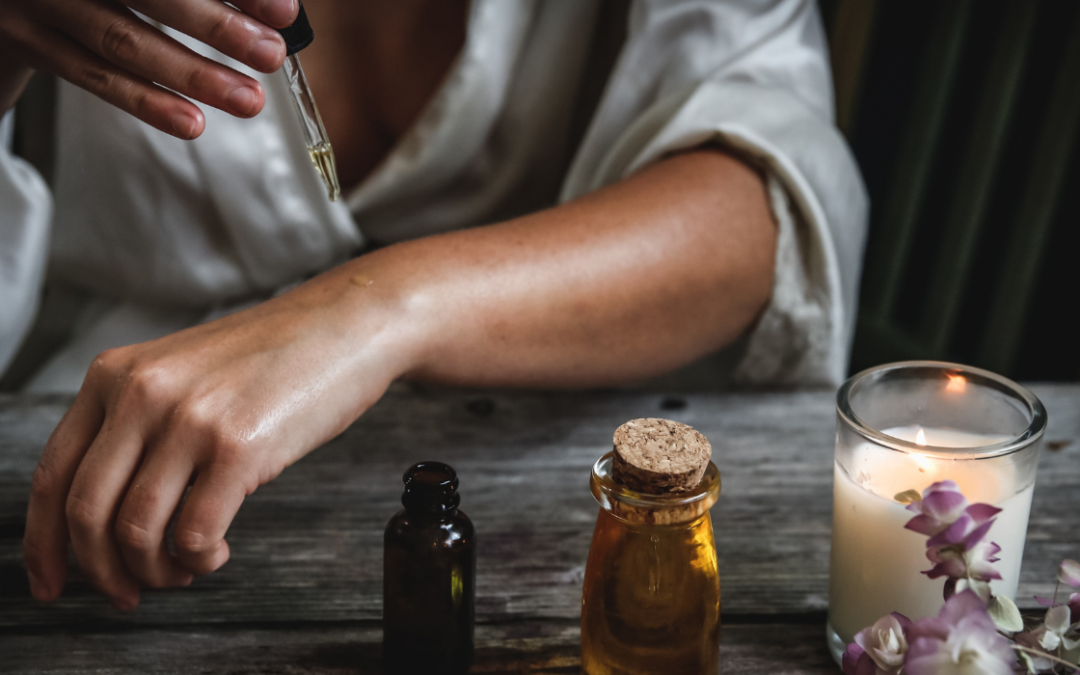Self-administered lymphatic massage is increasingly recognized as an effective form of self-care. This technique, which involves gentle massage to stimulate lymph flow, offers an array of benefits for anyone seeking to enhance their overall well-being.
Other lymphatic massage techniques include using a dry brush, or a using a fascia body roller with a high-quality castor oil. I personally like to use a dry brush when I work on moving my lymphatic system, but use whichever technique you like best! How often you do this massage will depend on your current health and how well your body is able to move the toxins out of the lymphatic system. If you’re new, you may want to start with one time per week and slowly work up to one time per day.
Understanding the Lymphatic System
Before delving into the practice, it’s helpful to understand the lymphatic system’s role. This network of delicate tubes and organs throughout the body helps to move out toxins, waste, and other unwanted materials. It’s a key component of the immune system, housing white blood cells that fight infection[1]. The lymphatic system doesn’t have a pump like the heart; it relies on muscle movement to transport lymph fluid through the body.
Why Practice Self-Administered Lymphatic Massage?
Boosts Immune Function: The lymphatic system is a critical part of your body’s defense mechanism. By encouraging lymph flow, self-massage can help in detoxifying and strengthening the immune system, making you more resilient against illness[2].
Promotes Relaxation and Reduces Stress: The gentle, rhythmic strokes of lymphatic massage are deeply relaxing, helping to ease tension and stress[3]. It’s a form of self-care that soothes both the mind and body, fostering a sense of peace and tranquility.
Enhances Skin Health: Regular lymphatic massage can improve your skin’s appearance, promoting a radiant, youthful glow. It aids in reducing puffiness and improving skin tone by supporting the body’s natural detox processes[4].
Supports Digestive Health: By stimulating the lymphatic system, this massage technique can also aid in improving digestion and alleviating bloating, making it a holistic approach to wellness[5].
Encourages Body Awareness and Mindfulness: Engaging in self-massage encourages a deeper connection with your body, enhancing mindfulness and self-awareness. This practice can be a meditative experience, offering a moment of calm in your busy day.
How to Perform Self-Administered Lymphatic Massage
Remember, the touch should be light; lymph vessels are close to the skin and require gentle pressure.
Neck: Start with the sides of the neck, using your fingertips, gently stroke down towards the collarbone. Then move to the back of your neck, gently stroking down toward the base of the neck. Repeat 10-15 times.
Arms and sides: Begin at the top of your arm. Use light, sweeping motions down towards your armpit. Next, move under your armpit and gently sweep upwards towards your shoulder. Lastly, starting at the side of your hip, lightly sweep upwards towards your armpit. Repeat 10-15 times.
Abdomen: Use circular, clockwise motions around your belly button, gently moving outwards. Repeat 10-15 times.
Legs: Starting from the top of your leg, sweep down towards the groin area. Repeat with gentle strokes 10-15 times.
While lymphatic drainage massage is considered safe for most people, it’s not appropriate for everyone, including those with conditions such as heart disease, kidney disease, tuberculosis, or those with infections, blood clots, or deep vein thrombosis so be sure to check with your qualified health professional. Sometimes massages, especially lymphatic massages, can start moving toxins too quickly for your body to handle. If you notice an increase in your symptoms, you may want to take a break or complete your lymphatic massage less frequently.
Incorporating self-administered lymphatic massage into your self-care routine can be a helpful support for your health and well-being. It’s a simple, yet powerful tool to boost your immune system, detoxify your body, and provide a moment of tranquility in your day.
Sources
- Null M, Arbor TC, Agarwal M. Anatomy, Lymphatic System. In: StatPearls [Internet]. Treasure Island (FL): StatPearls Publishing; 2024 Jan. 2023 Mar 6. PMID: 30020619.
- Ambler, W., Santambrogio, L., & Lu, T. T. (2022). Advances in understanding and examining lymphatic function: relevance for understanding autoimmunity. Current Opinion in Rheumatology, 34(2), 133-138. doi: 10.1097/BOR.0000000000000864.
- Labrique-Walusis, F., Keister, K. J., & Russell, A. C. (2010). Massage therapy for stress management: implications for nursing practice. Orthopedic Nursing, 29(4), 254-257. doi: 10.1097/NOR.0b013e3181e517c6.
- Miyaji, A., Sugimori, K., & Hayashi, N. (2018). Short- and long-term effects of using a facial massage roller on facial skin blood flow and vascular reactivity. Complementary Therapies in Medicine, 41, 271-276. doi: 10.1016/j.ctim.2018.09.009.
- Wang, T. J., Wang, H. M., Yang, T. S., Jane, S. W., Huang, T. H., Wang, C. H., & Lin, Y. H. (2015). The effect of abdominal massage in reducing malignant ascites symptoms. Research in Nursing & Health, 38(1), 51-59. doi: 10.1002/nur.21637.

